I have a DataFrame like this that I'm trying to describe with a Sankey diagram:
import pandas as pd
pd.DataFrame({
'animal': ['dog', 'cat', 'cat', 'dog', 'cat'],
'sex': ['male', 'female', 'female', 'male', 'male'],
'status': ['wild', 'domesticated', 'domesticated', 'wild', 'domesticated'],
'count': [8, 10, 11, 14, 6]
})
animal sex status count
0 dog male wild 8
1 cat female domesticated 10
2 cat female domesticated 11
3 dog male wild 14
4 cat male domesticated 6
I'm trying to follow the steps in the documentation but I can't make it work - I can't understand what branches where. Here's the example code:
import plotly.graph_objects as go
fig = go.Figure(data=[go.Sankey(
node = dict(
pad = 15,
thickness = 20,
line = dict(color = "black", width = 0.5),
label = ["A1", "A2", "B1", "B2", "C1", "C2"],
color = "blue"
),
link = dict(
source = [0, 1, 0, 2, 3, 3],
target = [2, 3, 3, 4, 4, 5],
value = [8, 4, 2, 8, 4, 2]
))])
fig.update_layout(title_text="Basic Sankey Diagram", font_size=10)
fig.show()


